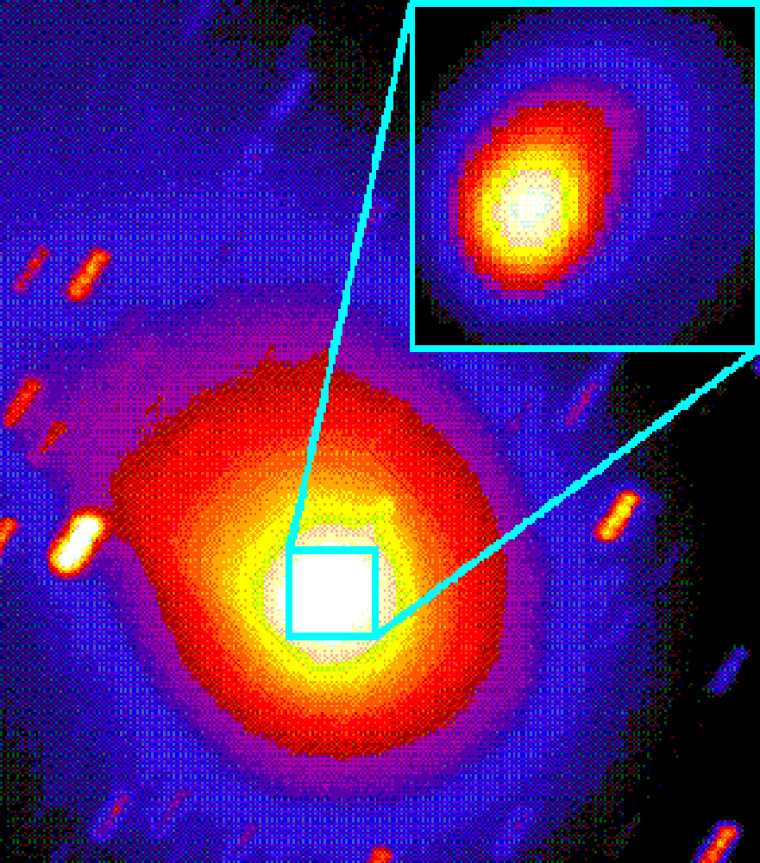This week, the skies above the Northern Hemisphere will be peppered with little bits of space debris that create the annual Perseid meteor shower. It could be the best display in several years, peaking Wednesday night and Thursday morning.
There are also a lot of interesting bits of information associated with the Perseids and its parent comet, Swift-Tuttle, which with each pass through the inner solar system sheds some of its skin in the form of dust and other small chunks of debris.
Here are 10 cool facts you can use to impress friends and family late at night or early in the morning while watching for shooting stars:
1. Those meteoroids are fast
Perseid meteoroids (which is what they're called while in space) are fast. They enter Earth's atmosphere (and are then called meteors) at roughly 133,200 mph (60 kilometers per second) relative to the planet. Most are the size of sand grains; a few are as big as peas or marbles. Almost none hit the ground, but if one does, it's called a meteorite.
2. This comet's the Big One
Comet Swift-Tuttle, whose debris creates the Perseids, is the largest object known to make repeated passes near Earth. Its nucleus is about 6 miles (9.7 kilometers) across, roughly equal to the object that wiped out the dinosaurs. Good thing it isn't going to hit us.
3. The comet could come closer
Back in the early 1990s, astronomer Brian Marsden calculated that Swift-Tuttle might actually hit Earth in the year 2026. More observations quickly eliminated all possibility of a collision. Marsden found, however, that the comet and Earth might experience a cosmic near miss (by about a million miles) in 3044.
4. Here's what makes a meteor hot
When a Perseid particle enters the atmosphere, it compresses the air in front of it, which heats up. The meteor, in turn, can be heated to more than 3,000 degrees Fahrenheit (1,650 Celsius). The intense heat vaporizes most meteors, creating what we call shooting stars. Most become visible at around 60 miles up (97 kilometers). Some large meteors splatter, causing a brighter flash called a fireball, and sometimes an explosion that can often be heard from the ground.
5. There's more where that comet came from
Comet Swift-Tuttle has many comet kin. Most originate in the distant Oort Cloud, which extends nearly halfway to the next star. The vast majority never visit the inner solar system. But a few, like Swift-Tuttle, have been gravitationally booted onto new trajectories, possibly by the gravity of a passing star long ago.
6. We're passing through cosmic streams
Perseid meteoroids (and if you've been following along, you know these are things in space before they hit Earth's atmosphere) are anywhere from 60 to 100 miles (100 to 160 kilometers) apart, even at the densest part of the river of debris left behind by Comet Swift-Tuttle. That river, in fact, is more like many streams, each deposited during a different pass of the comet on its 130-year orbit around the sun. The material drifts through space and, in fact, orbits the sun on roughly the same path as the comet, while also spreading out over time.
7. Here's how to get on a shooting star's good side
As Earth rotates, the side facing the direction of its orbit around the sun tends to scoop up more space debris. This part of the sky is directly overhead at dawn. For this reason, the Perseids and other meteor showers (and also random shooting stars in general) are usually best viewed in the predawn hours.
8. This comet doesn't come around often
Comet Swift-Tuttle was last seen in 1992, an unspectacular pass through the inner solar system that required binoculars to enjoy. Prior to that, it had last been seen in the year it was "discovered" by American astronomers Lewis Swift and Horace Tuttle, 1862. Abraham Lincoln was president.
9. Sightings go back to ancient times
Swift-Tuttle's orbit has been traced back nearly 2,000 years and is now thought to be the same comet that was observed in A.D. 188 and possibly even as early as 69 B.C.
10. Make a date for the 22nd century
Swift-Tuttle is due back in 2126 (as you know now, it won't hit us) and astronomers think it might become a spectacular naked-eye comet like Hale-Bopp. If historical calculations are correct (see Fact No. 9), then the 2126 appearance will mark the comet's third millennium of human observation, assuming someone is in fact around to see it.
This information appeared previously on Space.com. It has been revised slightly for this year's version of the Perseids.
